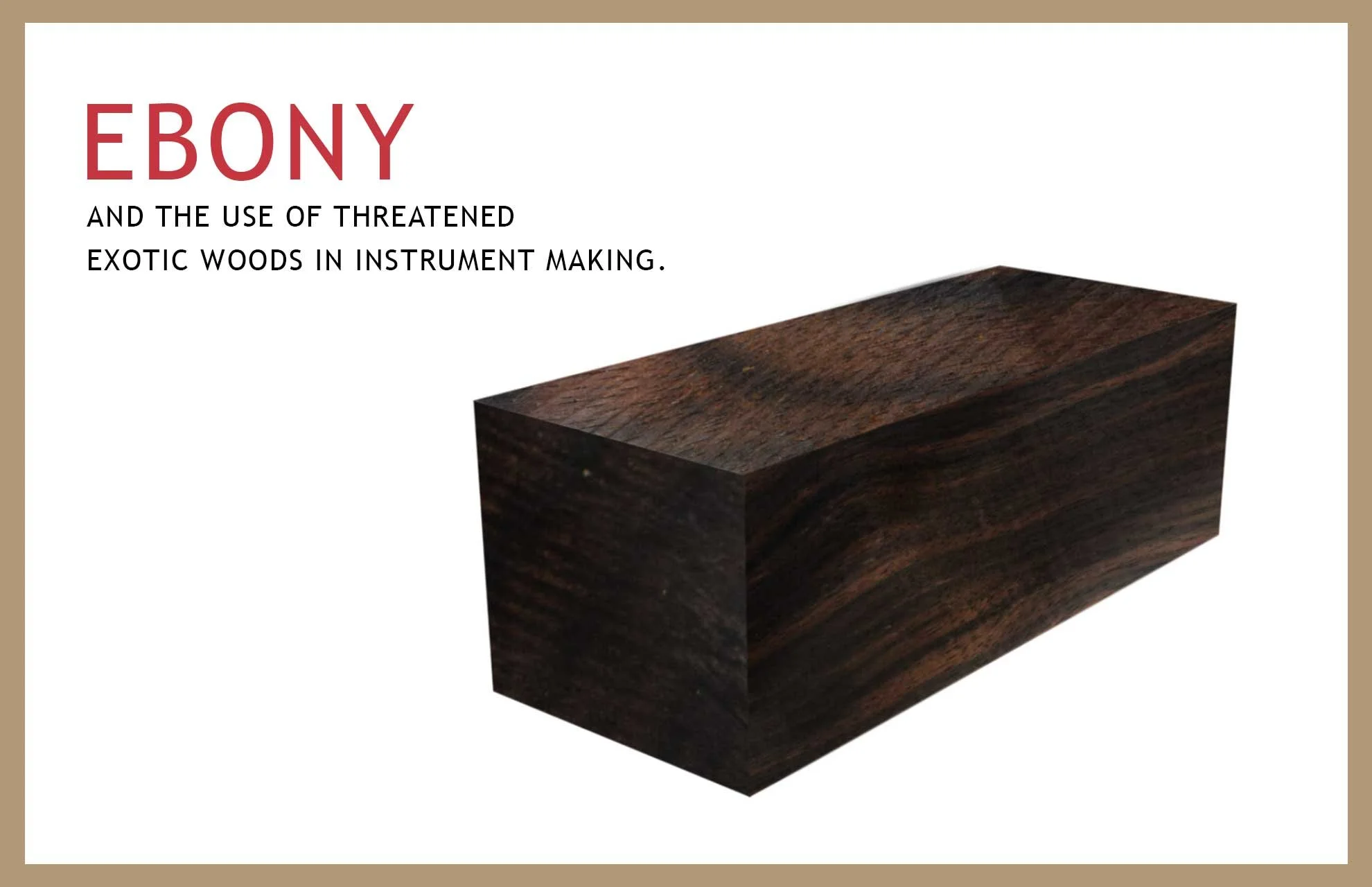EBONY & INSTRUMENT MAKING
In 1973, Richard Nixon signed the Endangered Species Act that identified for the first time severely threatened flora and fauna that needed government help to protect from entire extinction. Because of the passage of this act, Tortoise and Whalebone were both made offlimits for bow and violin making. Makers were required to document that the listed materials were harvested prior to the passage of this law. Since then, other materials have become of concern on both the national and international community. These include two woods that are in common use in instrument and bow making: ebony and Pernambuco.
V. RICHELIEU AND THE USE OF EBONY
As we approached designing our instrument, we were immediately concerned about ebony. It started with the observation that good ebony is hard to find. Our traditional sources of ebony yielded fingerboards that were chippy and low-grade….the really good ebony we tended to import and it was expensive. Sourcing good ebony was a problem, and the source of the problem was quickly made evident: the wood forests that yielded ebony are under pressure and what was once a ubiquitous and easy to procure wood, was becoming increasingly rare. Our research told us that of the several species of ebony, none is prevalent in large quantities and any harvesting of this wood is unsustainable. Some of these species are endangered, others “merely” threatened, but all of them are at increased risk of rarification.
Putting aside for the time being the issues of ebony specifically, let’s look more generally at the issues of endangerment of natural resources. How does a species become threatened?
To begin with, the music industry is hardly responsible for the decline of an entire species’ population. But it is a contributing factor. Here are a few ways a species can become endangered:
Some Species exist in a limited range or in very specific habitats. Think Kangaroos and Australia. We don’t find kangaroos roaming the plains of any other country. If Australia were to disappear, or its environment dramatically change, so would “wild” kangaroos. Australia is not at risk of disappearing, but its biodiversity is affected by the global weather changes that certainly puts the nation’s biome at risk of change. Other species exist within much smaller geographic areas and the smaller this area, the more a change (development, weather pattern) affects the biodiversity of that area.
While some species have large geographic areas, those that develop at the outer edge of their range often offer genetic diversity. Think rattlesnakes in Vermont, and yes, they do exist here. Genetic diversity in species occurs in part when a species inhabits a broad range of habitats. In some of the more extreme parts of their range, they may be considered threatened or endangered because their population numbers are small; and they are more likely to disappear due to hunting, pests/disease, or changes in climate.
Overuse and overconsumption. Species that fill very specific or popular economic niches tend to be overharvested or hunted. Ivory (elephants), ebony, and Pernambuco are three we are familiar with in the music industry. Once upon a time, these materials were everywhere in large quantities. The oceans were filled with whales; forests with ebony and Pernambuco. But with unabated whaling and forestry, and little government control, what was once plentiful is now diminished.
Pests and disease. Small brown bats were a common presence in Vermont skies until 2008. White-nose syndrome, a fungus, wiped out hundreds of thousands of the bats, 90% of the population in Vermont, between 2008 and 2009.
Development. Agriculture, new roads, pollution, and building construction have changed extensive landscapes, jeopardizing once common species ranging from the American buffalo to Pernambuco.
The good news is that since 1973 and the passage of the Endangered Species Act, there has been some movement towards the conservation of some of the species affected. There are technical differences between threatened and endangered, and there are two international organizations that grapple with those designations. The International Union of the Conservation of Nature (IUCN) is an international non-governmental organization that monitors the ecological status of species around the world. They designate species in decline on a scale ranging from the watch list to endangered. This “red list” is then referred to by interested parties to negotiate legal protection measures through the Convention on International Trade in Endangered Species arm of the United Nations.


